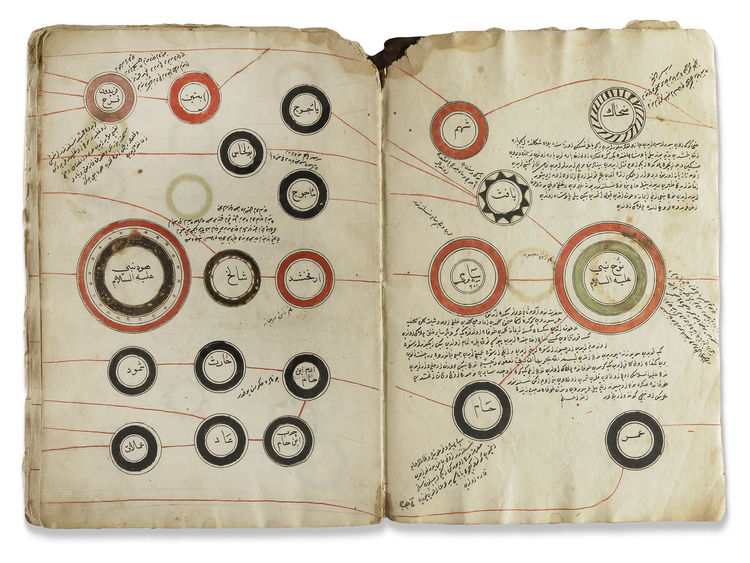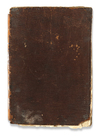Lot 169 MAJMA’ AL-ANSAB SILSILA NAMA, AN OTTOMAN GENEALOGY, TURKEY, 18TH CENTURY
Arabic and Ottoman Turkish manuscript on cream paper, 28 leaves each page with polychrome roundels containing names and titles of religious and historical figures in black Ottoman naskh script, starting with Adam and finishing with the Ottoman Sultan Bayazid, the roundels surrounded by notes in black, illuminated heading followed by an introduction in black ink.
In deep red leather binding.
20 by 30 cm.
Catalogue note:
These kinds of manuscripts were important for tracing lineage and establishing religious, noble, or royal descent. In Ottoman culture, genealogy often linked rulers or notable figures to significant historical or religious ancestors, legitimizing their authority or status. The word "Silsila" literally means “chain” or “lineage” in Arabic and is used in Islamic contexts to refer to a spiritual or genealogical chain, especially in Sufi traditions and royal genealogies.
Starting with Adam shows the manuscript's aim to place Ottoman rulers within a universal history stretching back to the first man, reflecting the Islamic view of history as a continuous chain of prophets, saints, and rulers. The manuscript ends with Sultan Bayazid, likely Bayazid I (reigned late 14th century) or Bayazid II (late 15th century), significant Ottoman sultans known for consolidating and expanding the empire.







